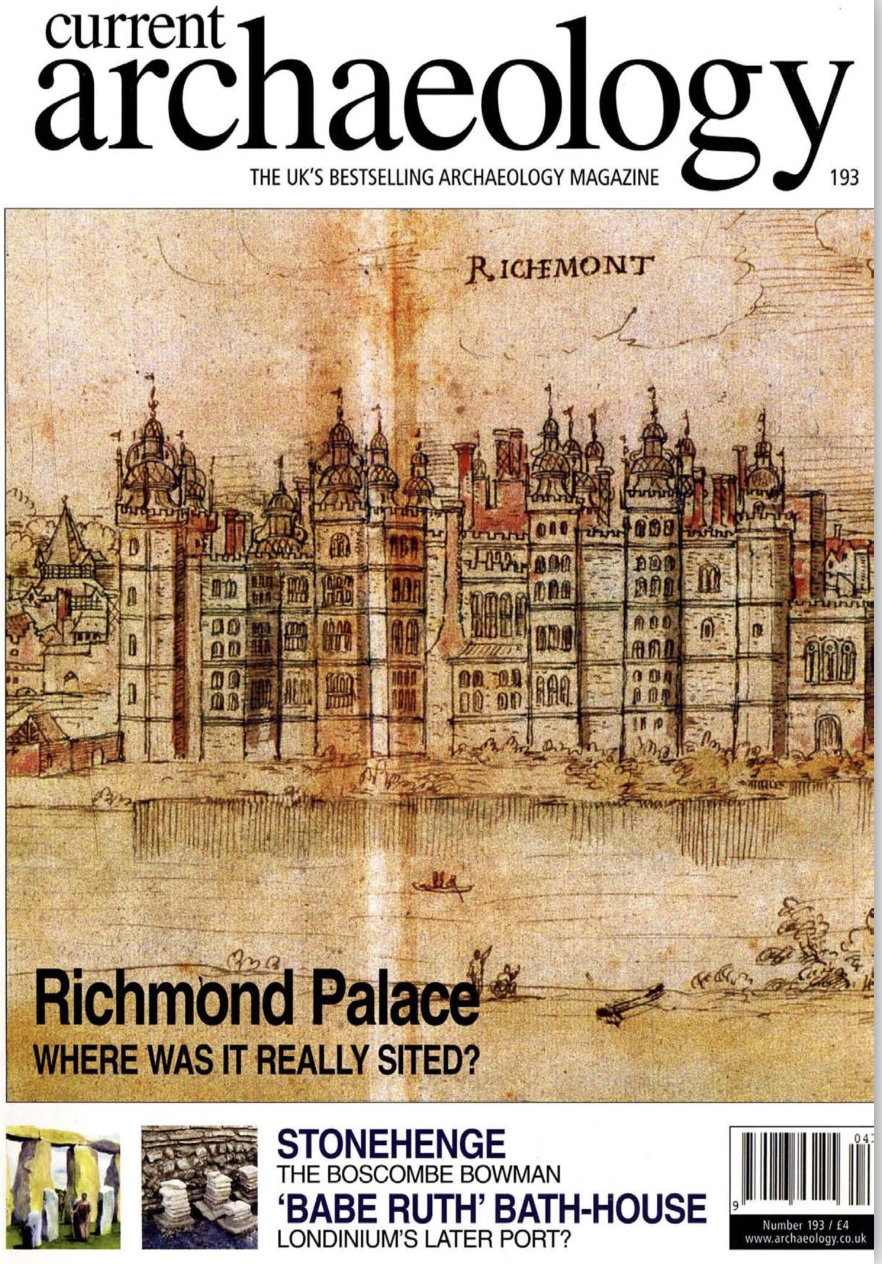This issue marks the opening of the 17th volume of Current Archaeology, so it is time for a new look, and a new layout. We are introducing perfect binding which has been so well received in Current World Archaeology – so the magazine now has a spine. There is also a new modem layout – graphic designs seem to change fashions as rapidly as women’s dresses – but we will no doubt be adapting it as we go along.
In addition to all this, we have a whole pethora of new discoveries to report. Andrew Fitzpatrick of Wessex Archaeology seems to be establishing a monopoly on remarkable new discoveries at Stonehenge. Following the discovery of the Amesbury Archer – surely the leader of the Beaker invaders arriving from Central Europe – he now has another remarkable burial which he has entitled The Boscombe Bowman. Here again, scientific evidence reveals a distant origin, but where does all his equipment come from?
And then we come on to a site, nick-named the ‘Babe Ruth’ site after an American dining establishment of that name, which was demolished to make way for a new building development. But here a rnile to the east of the City of London, the archaeologists discovered a large and elaborate bath house. [t is not apparently the usual ‘row’type of bath house where you walk through to the hot room and then have to come back again, but the ‘ring’type where you go round in a circle. What was it doing here, outside the City, in the 3rd century? Was it part of a new port establishment that sprang up when the building of the riverside wall rendered the Roman port of London more or less useless?
On the Isle of Thanet, in Kent – which really was an island in Roman times a Roman villa has been discovered. But how was it to be excavated? Keith Partitt describes how a happy solution has been discovered: it has become a training school for the Kent Archaeological Society. But why was the villa abandoned so early?
Richmond Palace was once one of the great palaces of Tudor England. Edward III and Queen Elizabeth died there – but it was old-fashioned, and in the Commonwealth it was demolished. But where exactly was it? Time Team set out to dig up the gardens of the house that succeeded it, but little were they to know that the real answer was being discovered hidden away in a library in Italy.
How did the Medieval peasant differ from the Medieval townsfolk? At the deserted Medieval village of Wharram Percy, in Yorkshire, the entire Medieval cemetery was excavated. And here Simon Mayes, who is studying the bones, compares them to the bones discovered in Medieval York. Neil Faulkner reports in his inimitable style.
There are also Books, the Diary, a new column from Carenza Lewis, as well as two pages of letters on the television programme Extreme Archaeology.
Finally, once this issue of Current Archaeology is safely at the printers, we at CA have more important matters to attend to. Our son Robert, who for the past five years has been the publisher of Current Archaeology and who is now very much the driving force behind CA as well as CWA, is getting married to Libby Gladwell in August. He is doing so in [me style at a castle in Herefordshire, known confusingly as Hampton Court; and when he eventually returns, there will, we hope, be a new Mrs Selkirk to help drive the magazines forward!

